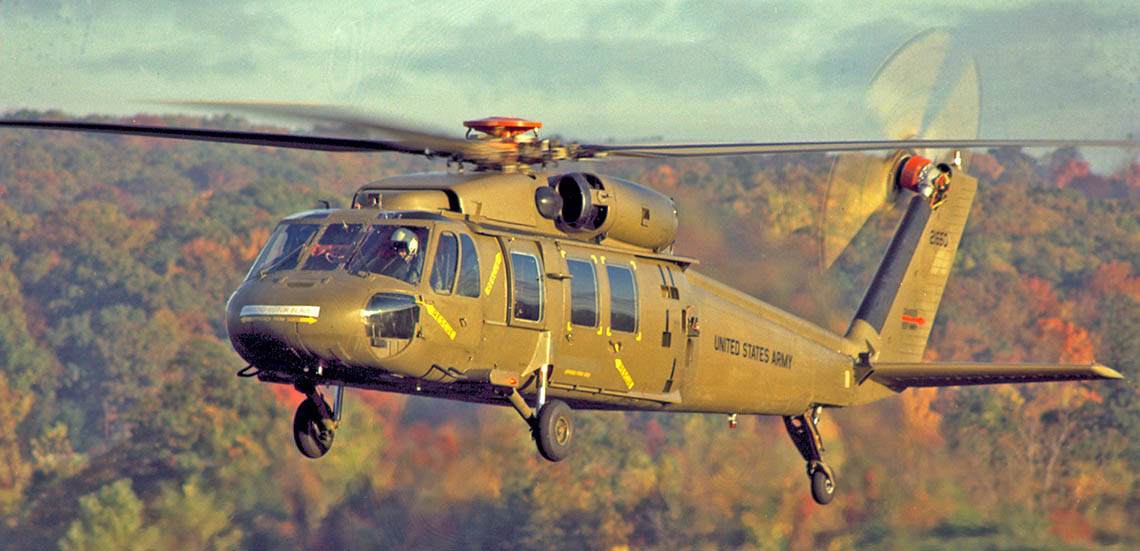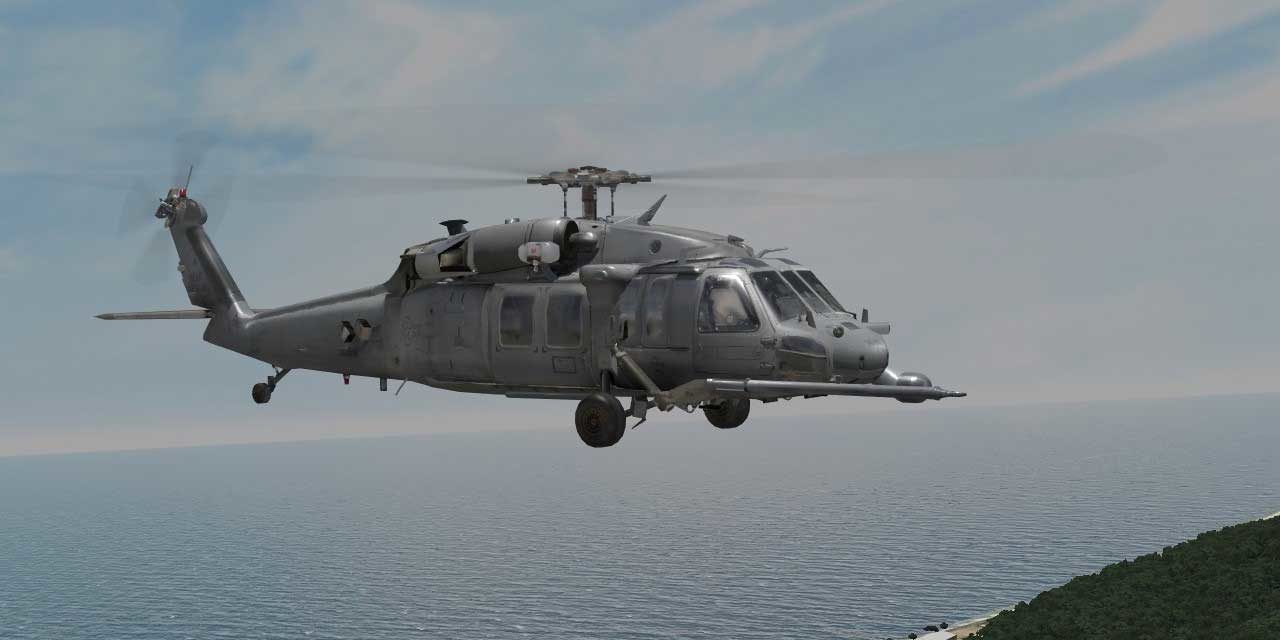Why the Sikorsky S 70 is the Preferred Selection for Modern Helicopter Missions
Why the Sikorsky S 70 is the Preferred Selection for Modern Helicopter Missions
Blog Article
High-Performance Multi-Role Rotorcraft Featuring Advanced Cockpit Technologies and Integrated Sensor Solutions
The realm of rotorcraft technology has seen noteworthy improvements in recent times, especially in the world of high-performance multi-role rotorcraft furnished with advanced cabin technologies and effortlessly integrated sensor systems. In the adhering to conversation, we will discover the evolution of rotorcraft innovation, dive into the world of advanced cockpit developments, and check out the ramifications of incorporated sensor systems on the functional versatility and effectiveness of contemporary rotorcraft.
Advancement of Rotorcraft Technology
The development of rotorcraft technology has actually been noted by substantial developments in the rules of aerodynamics, products, and propulsion systems, shaping the abilities and efficiency of modern-day rotorcraft. Wind resistant improvements have improved the performance and ability to move of rotorcraft, permitting for increased speed, dexterity, and security throughout flight (sikorsky s 70). Technologies in materials, such as using composite materials and progressed alloys, have actually resulted in lighter yet stronger rotorcraft structures, improving overall performance and longevity. In addition, developments in propulsion systems, including more effective engines and innovative propulsion innovations, have allowed rotorcraft to accomplish greater elevations, faster speeds, and higher payloads.
These developments have not just changed the capacities of rotorcraft however have also increased their applications throughout numerous sectors, including military, business, and emergency situation solutions. The continuous evolution of rotorcraft technology remains to drive development in the area, pressing the limits of what is possible and shaping the future of vertical trip.
Advanced Cockpit Innovations
Building upon the fundamental innovations in aerodynamics, products, and propulsion systems, the world of rotorcraft innovation now changes emphasis towards introducing Advanced Cockpit Innovations. The combination of sophisticated innovations within the cockpit atmosphere plays a critical duty in improving the functional capabilities, safety, and efficiency of contemporary rotorcraft. sikorsky s 70. Advanced Cabin Innovations encompass a vast variety of features created to provide pilots with improved situational understanding, streamlined information management, and instinctive control interfaces
One of the crucial improvements in cockpit layout is the implementation of glass cabins, which replace standard analog gauges with high-resolution screens. These digital systems use customizable designs, real-time data integration, and enhanced readability, making it possible for pilots to access important info at a glimpse. In addition, advanced avionics systems, such as fly-by-wire controls and augmented fact display screens, are reinventing just how pilots connect with the aircraft, enabling exact control and improved decision-making capacities.


Integrating sophisticated cockpit advancements not only improves pilot performance however additionally adds to general mission effectiveness and safety in intricate functional environments. By leveraging state-of-the-art technologies within the cabin, rotorcraft makers are setting new standards for functional excellence and goal success.
Integrated Sensing Unit Solutions
With the evolution of rotorcraft modern technology, the assimilation of sophisticated Integrated Sensor Equipment has come to be vital in enhancing functional efficiency and safety and security. These Integrated Sensor Equipments include a broad selection of innovations that offer vital data for different functions such as navigating, monitoring, targeting, and ecological monitoring. By effortlessly incorporating sensing units like radars, cameras, lidar, and infrared systems into rotorcraft, drivers can take advantage of improved situational understanding, enhanced mission capabilities, and reduced pilot work.
One trick advantage of Integrated Sensing unit Systems is their capacity to collect real-time data and give actionable insights to pilots and mission operators. For instance, progressed radar systems can identify and track targets over cross countries, permitting very early danger detection and effective action preparation. Furthermore, integrating infrared and electro-optical electronic cameras enables rotorcraft to carry out reconnaissance and monitoring objectives with accuracy and precision.
Essentially, the assimilation of advanced sensing unit technologies into rotorcraft not only improves operational performance but also contributes considerably to total mission success and staff safety and security. As rotorcraft proceed to evolve, the role of Integrated Sensor Systems will most certainly visit the website stay at the forefront of development in the aerospace industry.
Functional Flexibility and Effectiveness
Enhancing operational versatility and efficiency in rotorcraft is a natural progression from the integration of innovative Integrated Sensing unit Systems. By leveraging the data and insights supplied by these sophisticated sensing unit systems, rotorcraft can optimize their efficiency throughout numerous goals and atmospheres.
Operational convenience incorporates the capacity of rotorcraft to adapt to different functions and situations effectively. With advanced cabin technologies and integrated sensor systems, rotorcraft can perfectly change between tasks such as search and rescue, clinical emptying, security, and extra. This convenience improves the rotorcraft's capacity to satisfy diverse functional requirements without calling for substantial reconfiguration.
Performance in rotorcraft procedures is crucial for optimizing mission performance and resource use. Integrated sensor systems play an essential role in boosting operational effectiveness by supplying real-time data on climate condition, surface mapping, target monitoring, and much more. This information enables pilots to make educated choices swiftly, enhance trip courses, conserve gas, and enhance general objective performance.
Effect On Modern Aeronautics Procedures

In addition, the integration of innovative sensors facilitates boosted mission preparation and execution, enabling rotorcraft to do a large range of jobs with enhanced accuracy. From search and rescue procedures to aerial firefighting and regulation enforcement objectives, the capabilities of contemporary rotorcraft equipped with innovative cockpit modern technologies and incorporated sensing unit systems are unmatched.
Furthermore, the influence of these developments extends past operational effectiveness to cost-effectiveness and sustainability. By maximizing flight routes, gas intake, and maintenance routines, high-performance rotorcraft furnished with advanced cockpit innovations and sensing units add to lowering operational costs her latest blog and environmental influence, making them essential properties in modern aviation operations.
Final Thought
In conclusion, the high-performance multi-role rotorcraft with sophisticated cabin modern technologies and incorporated sensing unit systems represents a considerable advancement in aeronautics modern technology. These developments boost functional convenience and efficiency, eventually influencing modern-day aeronautics procedures in a favorable means. The integration of these sophisticated innovations enables for improved capabilities view website and performance in various goal circumstances, showcasing the proceeded innovation of rotorcraft technology in the air travel sector.
The realm of rotorcraft modern technology has seen noteworthy advancements in current times, specifically in the world of high-performance multi-role rotorcraft furnished with sophisticated cabin innovations and perfectly integrated sensing unit systems. From improved objective flexibility to improved functional effectiveness, the convergence of sophisticated cockpit technologies and incorporated sensor systems has ushered in a new period of opportunities for rotorcraft applications. In the complying with conversation, we will certainly discover the development of rotorcraft innovation, delve right into the world of sophisticated cockpit innovations, and check out the ramifications of integrated sensing unit systems on the operational versatility and performance of modern-day rotorcraft.

Report this page